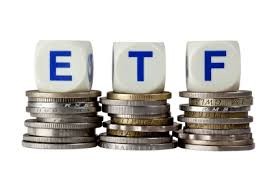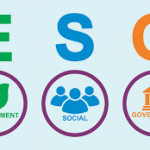Exchange-traded funds (ETFs) have gained significant market share throughout the last decade, and more investors are interested in utilizing the investment vehicle to design a diversified portfolio. Despite this, their adoption in 401(k) plans has been slow, as employer-sponsored retirement plans remain dominated by annuity products and mutual funds.
Tired of traditional 401(k) options’ high fees and annual costs, the modern participant is demanding more, and ETFs’ lower management fees, greater transparency, increased liquidity and added diversification are quickly filling the void. As the popularity of ETFs rise, 401(k) advisors must be ready to answer investors’ calls. In order to do so, it is important to understand what is driving ETF adoption and how to best implement them in a 401(k) plan.
Why ETFs are taking over 401(k)s
Millennials are becoming the largest share of the workforce, and they are significant drivers in ETF adoption through employer-sponsored plans. The latest data shows millennials have over 40 percent of their portfolios in ETFs, and the majority plan to increase their allocations to ETFs in coming years.
Understanding that millennials want ETF options is pivotal for advisors in solidifying their relationship with participants, particularly as workplace demographics shift. However, it is equally important to recognize what ETFs bring to the table. ETFs are attractive to investors, millennials and otherwise, for a number of reasons:
• Most ETFs are indexed and not actively managed resulting in lower fund expenses compared to most mutual funds and annuities.
• ETFs are created and redeemed with securities, which allows the fund manager to stay fully invested for more precise asset allocation versus most actively managed mutual funds which have to hold low-yielding cash for investor redemptions.
• ETFs are more liquid than annuity products which lack daily purchase or redemption features
Quite simply, ETFs provide solutions to many investor concerns in one investment vehicle.
ETFs can protect your plan sponsor clients—and you
Aside from investor objectives, there is a business case for ETFs, as the impact of ERISA Section 408(b) (2) regulations continues to be felt. Under the legislation, all retirement plans must be fully transparent with regards to fee disclosure for the plan’s operations. Plan sponsors’ fiduciary responsibility to put the interests of their employees ahead of their own is easier to test, and if found negligent, sponsors can be held liable for breach of this responsibility. Many companies have already been sued by the Department of Labor for excessive fees in their plans since this legislation went into effect, and it’s likely more of these suits will be forthcoming.
Historically, high-cost annuity products and actively-managed mutual funds have been subject to minimal regulatory oversight, meaning that they have had little obligation to fully disclose fees associated with the product. As a result, these vehicles make it difficult for plan sponsors to comply with ERISA regulation. However, ETFs’ inherent qualities provide a viable solution for plan sponsors to remain compliant. ETFs and ETF-based strategies can reduce fiduciary risk and effectively lower plan costs, improve portfolio transparency, increase diversification and provide plan participants greater liquidity.
ETFs are accessible through the CITs you already use
Though ETFs are clearly a strong addition to the 401(k) investment menu, determining how to incorporate them can be challenging. Fortunately, most advisors are already familiar with using Collective Investment Trusts (CITs) to tailor investment solutions for participants, and more recently CITs have allowed investors to access professional money managers that specialize in ETFs. These professional managers have developed numerous broadly diversified, strategic allocation models based on multiple risk/return requirements from conservative to aggressive growth, making it easy to meet the varied needs of plan holders. These model portfolios can address broad market risks or specific market niches that investors might not otherwise consider.
Notably, CITs have lower operational costs and provide an additional layer of fiduciary protection, since its trustee is a fiduciary to the fund and the fund manager also has a fiduciary duty to the underlying investor. Mutual funds and annuity contracts do not offer this advantage, giving ETFs another leg-up in the 401(k) space.
Ultimately, investor objectives and outcomes must remain the primary driver for 401(k) advisors. As the investment landscape evolves and investors become savvier, expect ETFs to become a larger part of the 401(k) industry.







